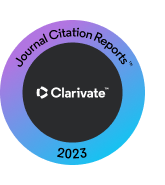TOXICITY OF NICKEL AND COPPER METALS AND THEIR POTENTIAL PERFORMANCE AS ENDOCRINE DISRUPTORS IN AQUATIC ENVIRONMENTS
DOI:
https://doi.org/10.5327/Z2176-947820180329Keywords:
chronic test; Danio rerio; gonadal tissue; morphological alterations; hepatic tissue; aquatic ecosystem.Abstract
Although they originate from natural sources, nickel is widely used in the production of equipment, building materials and copper used in electric wires, pipes, and automobiles. These metals are known for their potential toxicity to the aquatic environment in addition to being bioaccumulative and persistent elements. The main objectives of this study are: 1) to test the toxicity of copper and nickel metals; 2) to evaluate the potential as an endocrine interferent of said metals. In view of the above, chronic tests were carried out using the model organism Danio rerio for 21 days of exposure with copper (9 μg / L) and nickel (25 μg / L) metals in a semi-static regime, with total water exchange at every 72 hours, at a temperature of 25°C, fed once a day. Subsequently, the organisms were euthanized and destined to the histology procedure with inclusion in paraffin, staining with Hematoxylin and Eosin (HE) for morphological analysis of gonads and liver using light microscope. Both metals presented morphological alterations in hepatic tissue and nickel could potentially act as an endocrine disruptor, able to compromise the development of the species and consequently the ecosystem homeostasis.Downloads
Download data is not yet available.
Downloads
Published
2018-09-03
How to Cite
Novaes, G. H. C. de F., Aureliano, B. C., Fragoso‑Moura, E. N., Cavalcante, W., & Fracácio, R. (2018). TOXICITY OF NICKEL AND COPPER METALS AND THEIR POTENTIAL PERFORMANCE AS ENDOCRINE DISRUPTORS IN AQUATIC ENVIRONMENTS. Revista Brasileira De Ciências Ambientais, (48), 124–141. https://doi.org/10.5327/Z2176-947820180329
Issue
Section
Articles
License
Copyright (c) 2018 Revista Brasileira de Ciências Ambientais

This work is licensed under a Creative Commons Attribution 4.0 International License.


























